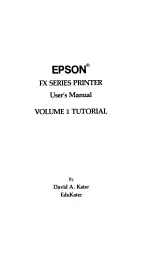
8
Procedures
a
b
c
c
d
Bobbin Winding – Vertical
Spool Pin
1.
Place an empty bobbin with the mark
out-wards on the bobbin spindle and
bring it down.
2.
Place the large spool holder under the
thread on the spool pin.
3.
Bring the thread under the thread guide
(a) and over thread guide (b), further
under thread guide (c).
4.
From above wind a few turns of thread
around the bobbin and into the knife.
5.
Press the foot control. When the bobbin
winding is fi nished, remove the bobbin,
cut off the thread and bring the bobbin
spindle up.
Bobbin Winding with the
Machine Threaded
Make sure that the presser foot is up and the
needle is in the highest position.
Note! Do not use a plastic presser foot
when bobbin winding.
1.
Place your empty bobbin with the small
mark
outwards on the bobbin spindle
on the front of the machine. Bring the
bobbin spindle down.
2.
Pull the thread from the needle under
the presser foot and to the right over the
thread guide (c).
3.
Start from above and wind a few turns
of thread around the bobbin. Cut off the
thread on the thread knife (d).
4.
Press the foot control. When the bobbin
winding is fi nished, remove the bobbin,
cut off the thread and bring the bobbin
spindle up.
Note!
We do not recommend winding spe-
cialty threads such as clear nylon or other
stretchy threads through the needle. Instead
see ”Bobbin winding – vertical spool pin”.
Summary of Contents for Lena
Page 1: ...K E E P I N G T H E W O R L D S E W I N G User s Guide ...
Page 30: ......











































